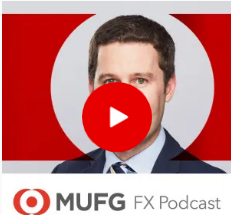USD has regained lost ground after NFP report
AUD: RBA disappoints market expectations for stronger rate hike signal
The Australian dollar has been one of the biggest movers during the Asian trading session as it has weakened alongside the yen. It has resulted in the AUD/USD rate falling back below the 0.6600-level. The main trigger for the weaker Australian dollar overnight was the RBA’s latest policy meeting which delivered a less hawkish policy signal than expected. Ahead of today’s policy meeting, the Australian rate market had moved along way to price out rate cuts for this year and had even started to price back in another rate hike as the most likely next policy step. The implied yield on the December 2024 Australian three-month interest rate futures contract had recently increased by around 55bps from the end of March to a high of 4.53% at the end of last month. However, the RBA’s updated policy statement did not provide a strong hawkish policy signal required to further encourage Australian rate market participants to price in more RBA rate hikes. Short-term rates in Australia have since fallen back by around 8bps overnight. In the updated policy statement, the RBA acknowledged that recent information has indicated that inflation is declining more slowly than expected.
In response the RBA has raised their near-term forecasts for inflation and cited the recent rise in domestic petrol prices and higher than expected services price inflation as the two main reasons. According to the statement on monetary policy, the RBA now expects inflation to reach 3.8% in June compared to its previous forecast of 3.3%. The persistence of services inflation is viewed as the key uncertainty for the inflation outlook. Stronger labour market conditions are now expected to result in services price inflation declining more slowly than previously expected. However, the RBA’s updated projections still showed inflation returning to the mid-point of their 2.0%-3.0% target band in 2026. It allows the RBA some room to leave policy unchanged for now in response to the recent upside inflation surprise. In the accompanying press conference, Governor Bullock described the current policy rate as at the “right level” but did indicate that they discussed the option of raising rates at today’s meeting while adding that “we might have to raise or might not” in the future. The RBA continues to be in data dependency mode when setting policy. Another upside inflation surprise in Q2 would increase the likelihood of another rate increase. For now the RBA’s policy guidance remains unchanged in that is continues to emphasize that they are “not ruling anything in or out”.
The AUD/USD has also softened in response to the broad-based US dollar rebound at the start of this week. The dollar index has now fully reversed all of the losses sustained just after the release of the weaker than expected nonfarm payrolls report on Friday. The report revealed both softer employment growth and average hourly earnings growth in April providing some much-needed reassurance for the Fed after the recent run of stronger US activity and inflation data. Furthermore, the ISM services survey for April was added to other leading indicators signalling slower growth ahead for the US economy and labour market. In response the US rate market has moved to price back in a higher probability of multiple Fed rate cuts by the end of his year which should help dampen the US dollar’s upward momentum in the near-term.
AUD/USD VS. SHORT-TERM YIELD SPREAD

Source: Macrobond, Bloomberg & MUFG Research
GBP: Weighing up downside risks for GBP from this week’s MPC meeting
The pound has been one of the best performing G10 currencies so far this year. After the US dollar, the pound has been the second-best performer. It has helped cable to hold up better against broad-based USD strength. After falling to a year to date low of 1.2300 on 22nd April, cable has since climbed back up to within touching distance of the 200-day moving average at 1.2570 and moved back to the middle of the 1.2000-1.3000 range that has been in place over the past year. Similarly, the pound has recovered lost ground against the euro as well in recent weeks resulting in EUR/GBP moving back towards the middle of the narrow trading range between 0.8500 and 0.8600 that has been in place for most of this year. The pound like the euro has been supported in recent weeks by building evidence of strengthening cyclical momentum in Europe. The mild technical recession in the UK at the end of last year appears to have been short-lived. UK GDP growth is on track to exceed the BoE staff forecast of 0.1% for Q1, and growth momentum appears to be strengthening further at the start of Q2.
The recent run of stronger UK activity data and the upside inflation surprise in March alongside the spill-over impact from the Fed’s hawkish shift in policy guidance signalling a delayed start to rate cuts, has encouraged UK rate market participants to push back the expected timing of the BoE’s first rate cut until the August or September MPC meetings. The probability of an earlier rate cut either this week or in June is currently judged as much less likely now with only around 11bps of cuts priced in by June. However, we do not expect the recent data flow to prevent the BoE from delivering a more dovish policy signal this week indicating they are moving closer to cutting rates.
While the BoE is expected to leave the policy rate on hold at 5.25% this week, recent comments from MPC officials have indicated that more MPC members may join arch dove Swati Dinghra in voting for a rate cut. Deputy Governor Dave Ramsden is the most likely candidate given he recently judged that risks to the BoE’s inflation forecasts are now “titled to the downside”. He expressed a similar view to Governor Bailey in having more confidence that the UK appears less of an outlier in terms of higher inflation than in other major economies, and now appears more of a laggard with inflation set to slow further this year. The shift in the balance of risks should be captured in the updated inflation projections in this week’s Quarterly Inflation Report. We expect the updated forecasts to indicate a lower probability of inflation overshooting the BoE’s inflation target over the forecast period. In light of these developments, we have held on to our forecast for the BoE to begin cutting rates sooner in June. A more dovish BoE policy update poses downside risks for the pound in the week ahead. Please see our latest FX Weekly (click here) for more details.
GBP/USD VS. SHORT-TERM YIELD SPREAD

Source: Bloomberg, Macrobond & MUFG GMR
KEY RELEASES AND EVENTS
|
Country |
GMT |
Indicator/Event |
Period |
Consensus |
Previous |
Mkt Moving |
|
GE |
08:30 |
HCOB Germany Construction PMI |
Apr |
-- |
38.3 |
!! |
|
UK |
09:30 |
S&P Global UK Construction PMI |
Apr |
50.4 |
50.2 |
!! |
|
EC |
10:00 |
Retail Sales MoM |
Mar |
0.7% |
-0.5% |
!! |
|
EC |
10:00 |
ECB's De Cos Speaks |
!! |
|||
|
CA |
15:00 |
Ivey Purchasing Managers Index SA |
Apr |
-- |
57.5 |
!! |
|
EC |
15:00 |
ECB's Nagel Speaks on Panel |
!! |
Source: Bloomberg



